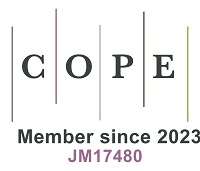REFERENCES
1. Potenza RF, Quintana GO, Cardoso AM, et al. Analysis of Brazilian greenhouse gas emissions and their implications for Brazil’s climate goals. Available from: http://seeg.eco.br [Last accessed on 14 Apr 2022].
2. CNA Confederação da Agricultura e Pecuária do Brasil. PIB do agronegócio avança no trimestre e acumula alta de 9,81% no primeiro semestre de 2021. Available from: https://www.cnabrasil.org.br/boletins/pib-do-agronegocio-avanca-no-trimestre-e-acumula-alta-de-9-81-no-primeiro-semestre-de-2021 [Last accessed on 14 Apr 2022].
3. IBÁ. São Paulo:Brazilian Tree Industry; Anual Report 2020.176 p. Available from: www.iba.org [Last accessed on 14 Apr 2022].
4. CONAB. Companhia Nacional de Abastecimento. Série Histórica das Safras. https://www.conab.gov.br/info-agro/safras/serie-historica-dassafras?limitstart [Last accessed on 14 Apr 2022].
5. Gama-rodrigues AC, Müller MW, Gama-rodrigues EF, Mendes FAT. Cacao-based agroforestry systems in the Atlantic Forest and Amazon Biomes: an ecoregional analysis of land use. Agric Syst 2021;194:103270.
6. IBGE. Municipal Livestock Research1990-2016. IBGE Automatic Recovery System 2017. https://sidra.ibge.gov.br/pesquisa/ppm/tabelas/brasil/2016 [Last accessed on 14 Apr 2022].
7. ANDA. National Association for the Diffusion of Fertilizers. Fertilizer Sector: Statistical Yearbook. 2020. Available from: http://www.anda.org.br/arquivos [Last accessed on 14 Apr 2022].
8. IBAMA. Brazilian Institute for the Environment and Renewable Natural Resources. Pesticides: Marketing history 2000-2019. 2021. http://www.ibama.gov.br/agrotoxicos/relatorios-de-comercializacao-de-agrotoxicos [Last accessed on 14 Apr 2022].
9. Christo GL, Santos MMO. Emissões de solos manejados: aspectos metodológicos e principais fontes de emissão. In: Sotta ED, Sampaio FG, Galhardo JV editors. Coletânea dos Fatores de Emissão e Remoção de Gases de Efeito Estufa da Agricultura Brasileira. Brasília: MAPA; 2020. p. 22-7.
10. Brasil. Science, Technology, Innovations and Communications Ministry of Brazil. Secretariat of Policies for Training and Strategic Actions. General Climate Coordination. Annual estimates of greenhouse gas emissions in Brazil. 5. ed. Brasilia: MCTIC; 2020. Available from: https://www.gov.br/mcti/pt-br/ [Last accessed on 14 Apr 2022].
11. Cabral OM, Freitas HC, Cuadra SV, et al. The sustainability of a sugarcane plantation in Brazil assessed by the eddy covariance fluxes of greenhouse gases. Agric For Meteorol 2020;282-283:107864.
12. Lima MA, Vieira RF, Frighetto RTS, Luiz AJB, Villela OV. Methane emission from a flooded rice field under pre-germinated system. Cienc Rural 2019; doi: 10.1590/0103-8478cr20190336.
13. Carvalho AMD, Bustamante MMDC, Coser TR, Marchão RL, Malaquias JV. Nitrogen oxides and CO2 from an Oxisol cultivated with corn in succession to cover crops. Pesq agropec bras 2016;51:1213-22.
14. de Figueiredo CC, de Oliveira AD, Dos Santos IL, et al. Relationships between soil organic matter pools and nitrous oxide emissions of agroecosystems in the Brazilian Cerrado. Sci Total Environ 2018;618:1572-82.
15. Carvalho MTDM, Madari BE, Leal WGDO, et al. Nitrogen fluxes from irrigated common-bean as affected by mulching and mineral fertilization. Pesq agropec bras 2013;48:478-86.
16. Sato JH, de Carvalho AM, de Figueiredo CC, et al. Nitrous oxide fluxes in a Brazilian clayey oxisol after 24 years of integrated crop-livestock management. Nutr Cycl Agroecosyst 2017;108:55-68.
17. Escanhoela ASB, Pitombo LM, Brandani CB, Navarrete AA, Bento CB, do Carmo JB. Organic management increases soil nitrogen but not carbon content in a tropical citrus orchard with pronounced N2O emissions. J Environ Manage 2019;234:326-35.
18. Cerri CC, Moreira CS, Alves PA, et al. Assessing the carbon footprint of beef cattle in Brazil: a case study with 22 farms in the State of Mato Grosso. J Clean Prod 2016;112:2593-600.
19. Torres CMME, Jacovine LAG, Nolasco de Olivera Neto S, et al. Greenhouse gas emissions and carbon sequestration by agroforestry systems in southeastern Brazil. Sci Rep 2017;7:16738.
20. Oliveira ADD, Ribeiro FP, Ferreira EAB, et al. CH4 and N2O fluxes from planted forests and native Cerrado ecosystems in Brazil. Sci agric (Piracicaba, Braz) 2021;78:e20180355.
21. Meurer KHE, Franko U, Stange CF, Rosa JD, Madari BE, Jungkunst HF. Direct nitrous oxide (N2O) fluxes from soils under different land use in Brazil - a critical review. Environ Res Lett 2016;11:023001.
22. Nair PKR. Carbon Footprints: introducing a new peer-reviewed, open access, international journal. Carbon Footprints 2021;1:1.
23. Jabbour R, Mcclelland SC, Schipanski ME. Use of decision-support tools by students to link crop management practices with greenhouse gas emissions: a case study. Nat Sci Educ 2021;50:e20063.
24. Sá JC, Lal R, Cerri CC, Lorenz K, Hungria M, de Faccio Carvalho PC. Low-carbon agriculture in South America to mitigate global climate change and advance food security. Environ Int 2017;98:102-12.
25. MAPA. Ministry of Agriculture, Livestock and Supply. Sectoral plan for mitigation and adaptation to climate change for the consolidation of a low carbon economy in agriculture: ABC plan (Low Carbon Agriculture) - Brasília: MAPA/ACS, 2012. 173 p. Available from: www.gov.br/agricultura/pt-br/assuntos/sustentabilidade/plano-abc/arquivo-publicacoes-plano-abc/download.pdf [Last accessed on 14 Apr 2022].
26. EMBRAPA. Brazilian Agricultural Research Corporation. ILPF in numbers. Brasilia: Embrapa; 2016. Available from: https://www.embrapa.br/busca-de-publicacoes/-/publicacao/1064859/ilpf-em-numeros [Last accessed on 14 Apr 2022].
27. Febrapdp 2022. Federação Brasileira de plantio direto na palha. Available from: www.febrapdp.org.br [Last accessed on 14 Apr 2022].
28. Florindo T, Florindo G, Talamini E, et al. Application of the multiple criteria decision-making (MCDM) approach in the identification of Carbon Footprint reduction actions in the Brazilian beef production chain. J Clean Prod 2018;196:1379-89.
29. de Figueiredo EB, Jayasundara S, de Oliveira Bordonal R, et al. Greenhouse gas balance and carbon footprint of beef cattle in three contrasting pasture-management systems in Brazil. J Clean Prod 2017;142:420-31.
30. Florindo TJ, de Medeiros Florindo GIB, Talamini E, da Costa JS, Ruviaro CF. Carbon footprint and Life Cycle Costing of beef cattle in the Brazilian midwest. J Clean Prod 2017;147:119-29.
31. de Léis CM, Cherubini E, Ruviaro CF, et al. Carbon footprint of milk production in Brazil: a comparative case study. Int J Life Cycle Assess 2014;20:46-60.
32. Carmo HF, Madari BE, Wander AE, Moreira FRB, Gonzaga ACO, et al. Energy balance and carbon footprint in the integrated and conventional production systems of irrigated common bean. Pesqui Agropecu Bras 2016;51:1069-77.
33. Escobar N, Tizado EJ, zu Ermgassen EK, Löfgren P, Börner J, Godar J. Spatially-explicit footprints of agricultural commodities: mapping carbon emissions embodied in Brazil’s soy exports. Glob Environ Change 2020;62:102067.
34. Persson UM, Henders S, Cederberg C. A method for calculating a land-use change carbon footprint (LUC-CFP) for agricultural commodities - applications to Brazilian beef and soy, Indonesian palm oil. Glob Chang Biol 2014;20:3482-91.
35. Lathuillière MJ, Johnson MS, Galford GL, Couto EG. Environmental footprints show China and Europe’s evolving resource appropriation for soybean production in Mato Grosso, Brazil. Environ Res Lett 2014;9:074001.
36. Pereira BDJ, Cecílio Filho AB, La Scala N. Greenhouse gas emissions and carbon footprint of cucumber, tomato and lettuce production using two cropping systems. J Clean Prod 2021;282:124517.
37. Brito de Figueirêdo MC, Kroeze C, Potting J, et al. The carbon footprint of exported Brazilian yellow melon. J Clean Prod 2013;47:404-14.
38. Martins LD, Eugenio FC, Rodrigues WN, Tomaz MA, Santos AR. Carbon and water footprints in Brazilian coffee plantations - the spatial and temporal distribution. Emir J Food Agric 2018;30:482-7.
39. Schroth G, Jeusset A, Gomes ADS, et al. Climate friendliness of cocoa agroforests is compatible with productivity increase. Mitig Adapt Strateg Glob Change 2016;21:67-80.
40. Monroe PHM, Gama-Rodrigues EF, Gama-Rodrigues AC, Vicente LC. Carbon and nitrogen occluded in soil aggregates under cacao-based agroforestry systems in Southern Bahia, Brazil. J Soil Sci Plant Nutr 2022; doi: 10.1007/s42729-021-00734-3.
41. Salgado GM, Gama-Rodrigues EF, Vicente LC, Gama-Rodrigues AC, Aleixo S, Marques JRB. Stable carbon in soils under rubber tree (Hevea brasiliensis) agroforestry systems in the south of Bahia, Brazil. SN Appl Sci 2019;1:790.
42. Oliveira DMDS, Paustian K, Davies CA, et al. Soil carbon changes in areas undergoing expansion of sugarcane into pastures in south-central Brazil. Agric Ecosyst Environ 2016;228:38-48.
43. Siqueira-Neto M, Popin GV, Piccolo MC, et al. Impacts of land use and cropland management on soil organic matter and greenhouse gas emissions in the Brazilian Cerrado. Eur J Soil Sci 2021;72:1431-46.
44. Carvalho JLN, Raucci GS, Cerri CEP, et al. Impact of pasture, agriculture and crop-livestock systems on soil C stocks in Brazil. Soil Tillage Res 2010;110:175-86.
45. Santos FLDS, Couto Júnior AF, Reatto A, Martins ÉDS, Carvalho AMD, Nardoto GB. Soil carbon and nitrogen under different land-use and landscape loca-tions in central Brazil. J Biotechnol Biodivers 2021;9:178-86.
46. Gmach M, Dias BO, Silva CA, Nóbrega JC, Lustosa-filho JF, Siqueira-neto M. Soil organic matter dynamics and land-use change on Oxisols in the Cerrado, Brazil. Geoderma Reg 2018;14:e00178.
47. Rittl TF, Oliveira D, Cerri CE. Soil carbon stock changes under different land uses in the Amazon. Geoderma Reg 2017;10:138-43.
48. Pinheiro FM, Nair PKR, Nair VD, Tonucci RG, Venturin RP. Soil carbon stock and stability under Eucalyptus-based silvopasture and other land-use systems in the Cerrado biodiversity hotspot. J Environ Manage 2021;299:113676.
49. Tonucci RG, Nair PK, Nair VD, Garcia R, Bernardino FS. Soil carbon storage in silvopasture and related land-use systems in the brazilian cerrado. J Environ Qual 2011;40:833-41.
50. Oliveira CV, Vicente LC, Gama-Rodrigues EF, Gama-Rodrigues AC, Marques JR, Barreto-Garcia PA. Carbon and nitrogen stock of Acrisols and Nitisols in South Bahia, Brazil. Geoderma Reg 2019;16:e00218.
51. Monroe PHM, Gama-Rodrigues EF, Gama-Rodrigues AC, Marques JRB. Soil carbon stocks and origin under different cacao agroforestry systems in Southern Bahia, Brazil. Agric Ecosyst Environ 2016;221:99-108.
52. Vicente LC, Gama-Rodrigues EF, Gama-Rodrigues AC. Soil carbon stocks of Ultisols under different land use in the Atlantic rainforest zone of Brazil. Geoderma Reg 2016;7:330-7.








